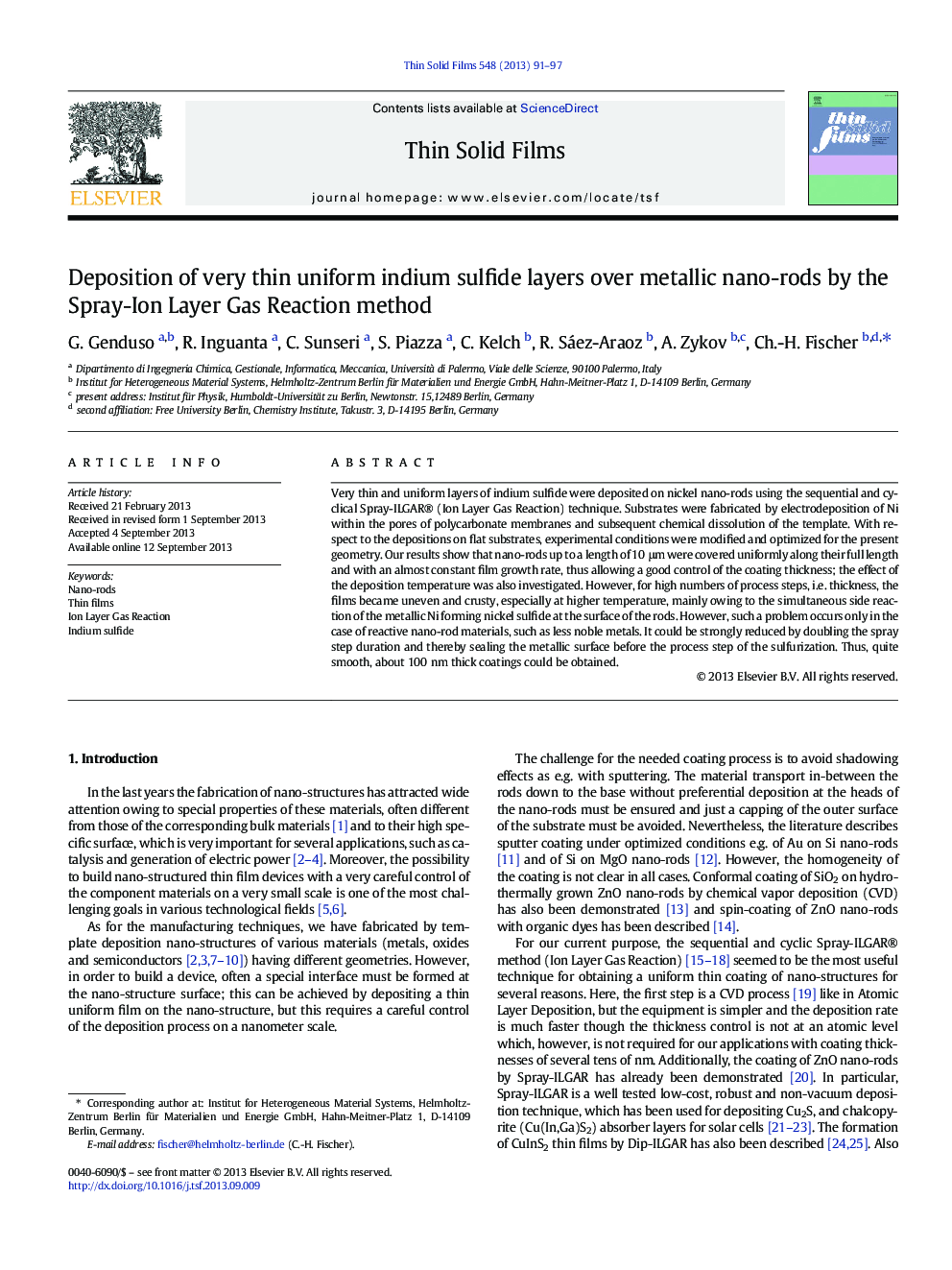| Article ID | Journal | Published Year | Pages | File Type |
|---|---|---|---|---|
| 1665787 | Thin Solid Films | 2013 | 7 Pages |
•Ni nano-rod substrates were grown within polycarbonate membranes.•We can coat nano-rods uniformly by the Ion Layer Gas Reaction method.•As a model we deposited up to about 100 nm In2S3 on Ni nanorods (250 nm × 10 μm).•Element mapping at insulated rods showed homogenous coating over the full length.•Parameter optimization reduced effectively the Ni sulfide formation.
Very thin and uniform layers of indium sulfide were deposited on nickel nano-rods using the sequential and cyclical Spray-ILGAR® (Ion Layer Gas Reaction) technique. Substrates were fabricated by electrodeposition of Ni within the pores of polycarbonate membranes and subsequent chemical dissolution of the template. With respect to the depositions on flat substrates, experimental conditions were modified and optimized for the present geometry. Our results show that nano-rods up to a length of 10 μm were covered uniformly along their full length and with an almost constant film growth rate, thus allowing a good control of the coating thickness; the effect of the deposition temperature was also investigated. However, for high numbers of process steps, i.e. thickness, the films became uneven and crusty, especially at higher temperature, mainly owing to the simultaneous side reaction of the metallic Ni forming nickel sulfide at the surface of the rods. However, such a problem occurs only in the case of reactive nano-rod materials, such as less noble metals. It could be strongly reduced by doubling the spray step duration and thereby sealing the metallic surface before the process step of the sulfurization. Thus, quite smooth, about 100 nm thick coatings could be obtained.
